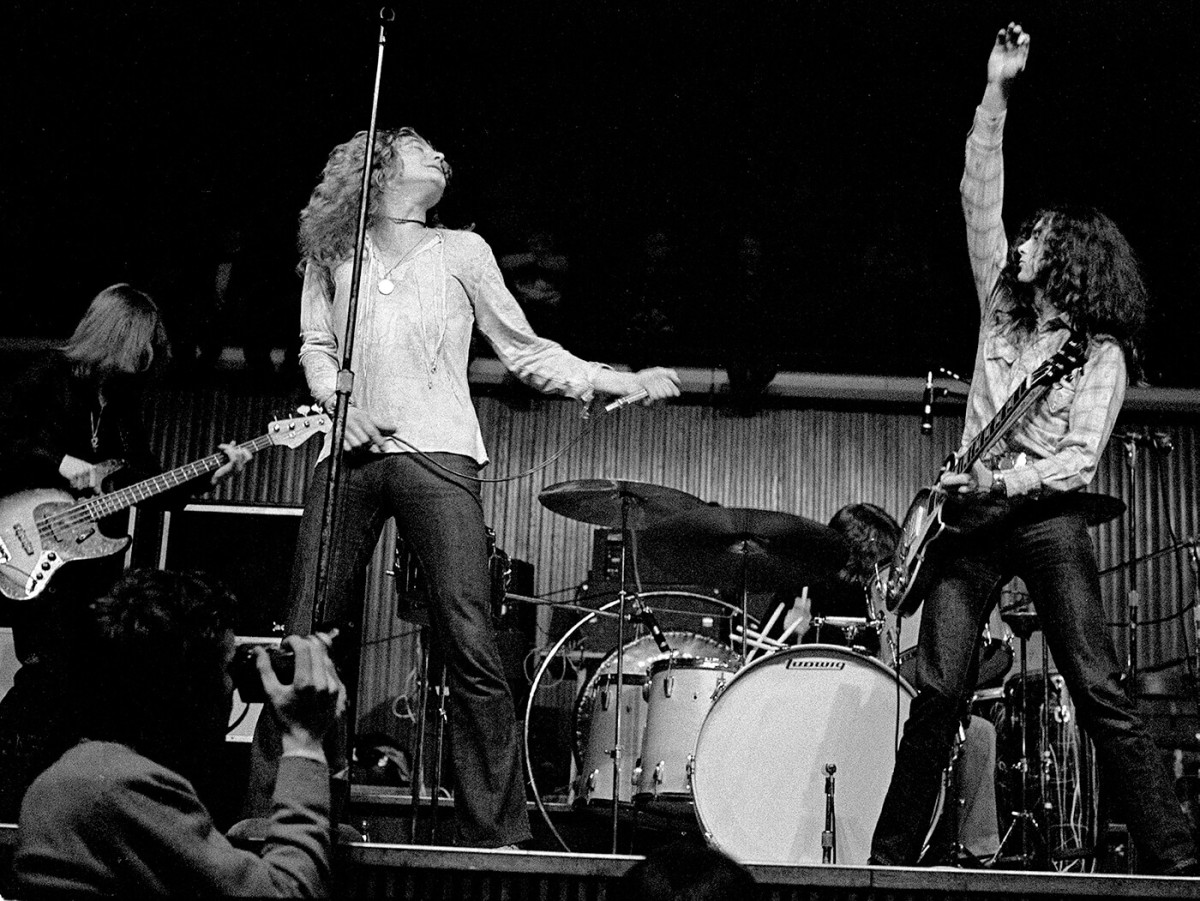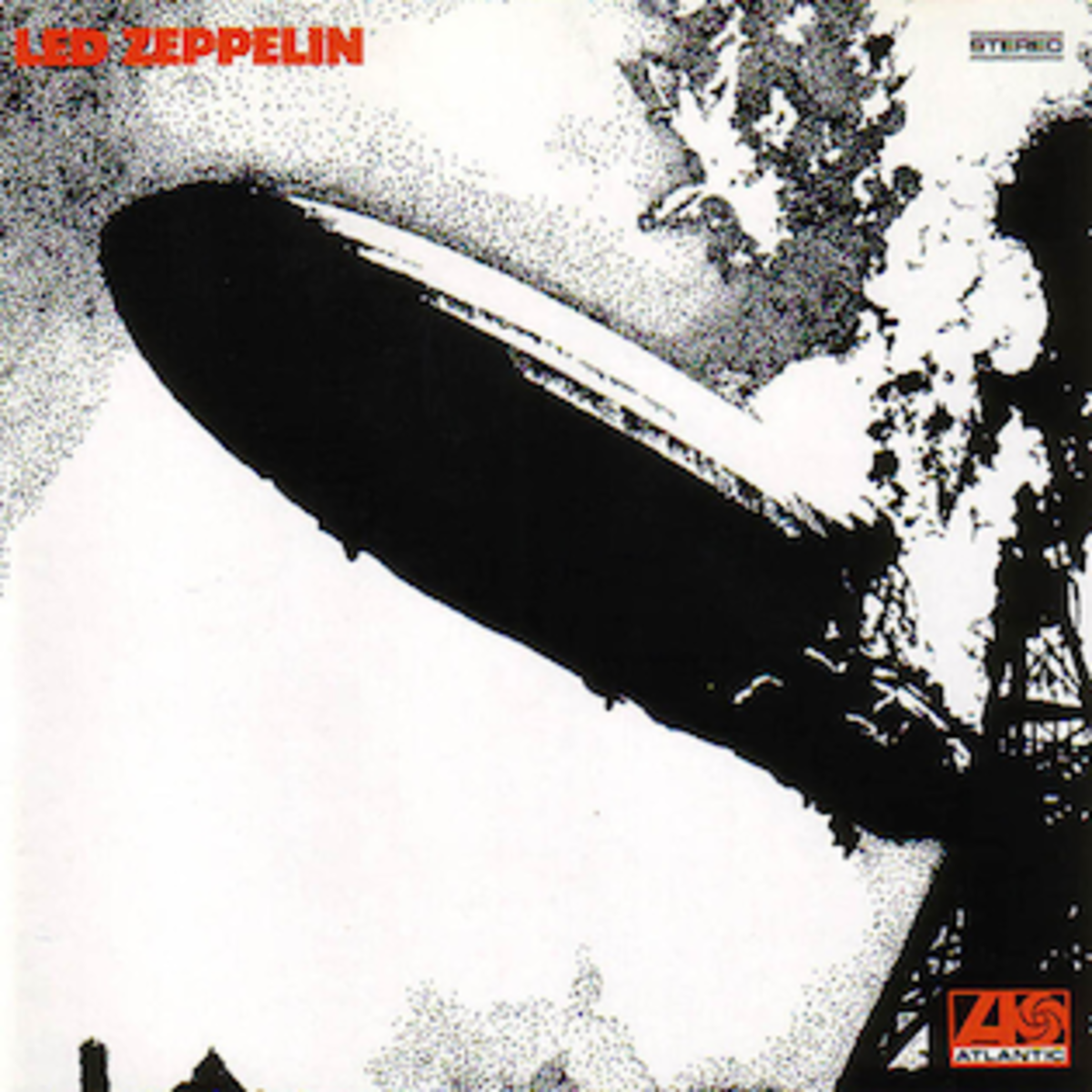The Moody Blues-On The Threshold of a Dream: A Review
A Personal Look Back at a Classic Rock Album
The band: Justin Hayward, John Lodge, Graeme Edge, Ray Thomas, and Michael Pinder.
The Moody Blues have sold over 50 million albums during the course of their 40+ year career. The album “On the Threshold of a Dream” was released in April 1969 and rose to #1 in the U.K., where it stayed in the charts for 73 weeks. This was the third album by the band following the inclusion of Justin Hayward and John Lodge (replacing Denny Laine and Clint Warwick, respectively). The album landed in the top twenty in the U.S. charts as well, but its only single, “Never Comes the Day”, flopped in the charts, peaking at #91. It’s clear upon listening to the album that it wasn’t crafted with singles in mind, however—it was meant to be listened to as a whole. The album was made during a time before Justin Hayward and John Lodge dominated the band—when Mike Pinder, Graeme Edge and Ray Thomas had equal opportunity to display their talents. On this album, no one is credited with less than two songs or more than three, and the most significant contributions were actually made by Mike Pinder, who contributed vocals (spoken or sung) to three songs he didn’t write.
The album’s cover painting by Phil Travers was stunning, with dreamlike images of a machine with one eye and two tentacles—a red rose in one metallic claw; the other connected to a peculiar tree evocative of a human profile, complete with a man’s eye and ear. (The oddly positioned tree branches reminded me of a human nose, mouth and chin. More branches and sparse leaves completed the look, vaguely resembling hair.) The blue and purple cover contained other images culled from the music, as Merlin loomed in one corner holding a magic wand; a white eagle spread its wings across the center of the painting; and, ships sailed at sea, as if on a long voyage.
Inside the album was a twelve page booklet offering song lyrics and sleeve notes penned by David Symonds and Lionel Bart. The booklet’s appearance was enchanting with flowing, graceful design and calligraphy. The theme of this concept album centered on dreams, and the transcendent lyrics to these songs transported me to another place, where dreams were as real as everyday reality. Subjects within the theme ranged from the mundane (Thomas’ Dear Diary and Lazy Day) to the inspiring (Edge’s In the Beginning). Bart told us he also lived on the threshold of a dream, and had no plan to leave. After hearing the thirteen songs on this album, I felt the same way.
The Dream Starts Here
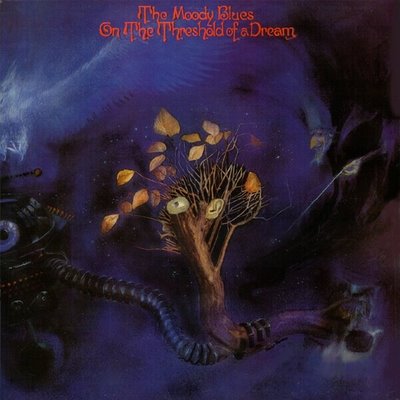
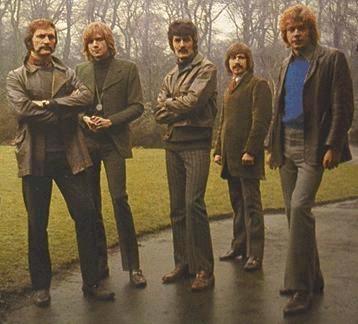
On the Threshold of a Dream: the Songs
Side One.
In the Beginning (Graeme Edge) 2:08. The album begins with a high frequency electronic sound, rising to a crescendo and halting abruptly as the verses begin. (This chilling introduction to the album is the only song in the Moody Blues catalog with multiple band members reciting spoken lyrics.) Justin Hayward represented the common man, questioning his place in the universe. Graeme Edge was the voice of a computer-dominated society, telling Hayward he is nothing more than computer code. As Hayward questioned further, Mike Pinder as the “inner man” told Hayward to “keep as cool as you can” and “keep on thinking free”. As the song ended it flowed seamlessly into the guitar track to “Lovely to See You”, an effect lost in subsequent re-releases where a noticeable pause was interjected between tracks.
Lovely to See You (Justin Hayward) 2:35. One of the best from the album and a staple of their live appearances, this song combined a nice guitar lick with three-part harmonies from Hayward, Thomas and Lodge. Its lyrics are relatively simple compared with the other tracks, but still ushered us into a dream world with the beautiful lines, “Tell us what you’ve seen in faraway forgotten lands, where empires have turned back to sand.”
Dear Diary (Ray Thomas) 3:56. This haunting song from Ray Thomas portrayed a lonely man communicating about his life through his diary. He can’t connect with the rest of society and writes of the world’s failure to notice either his presence or a better way to live. In resignation he retreats into the mundane. Posting a letter and exploding an H-bomb are the same in this man’s world, particularly since the bomb wasn’t set off by anyone he knew. Charming and poignant, this song set the tone for much of the album.
Send Me No Wine (John Lodge) 2:20. This well-crafted tune is a very nice John Lodge composition. Upbeat and energetic, it counterbalanced the previous song perfectly as it lifted the listener out of the depths explored in “Dear Diary”. I never understood exactly what the song was about as the lyrics didn’t really tell a story, but comprehension was not a prerequisite for appreciating this track.
To Share Our Love (John Lodge) 2:54. As I became more familiar with the Moody Blues and their style, I wondered why John Lodge had two consecutive tracks on this album, as opposed to a song on the second side. This song is a rarity in that it was written by Lodge but lead vocals were supplied by Mike Pinder. The two concurrently sang parts “A” and “B” (presaging Mike Pinder’s “Melancholy Man”, two years later) and provided a nice, if slightly raw, sound.
So Deep Within You (Mike Pinder) 3:07). This is an odd song that stylistically never reminded me of a Mike Pinder tune, but it’s a nice contribution nonetheless. The images invoked in this song seem less of dreams than (frankly) lying in bed, pondering lost love and being unable to sleep. This song was made special with Ray Thomas’ flute.
Side Two.
Never Comes the Day (Justin Hayward) 4:43. This is a nice if unspectacular song that occasionally finds its way into the Moody Blues live performances. It was meant to be released as a single but found no success in the charts. A standard Justin Hayward tune with strong guitars and thoughtful lyrics, it seems uninspired when compared with his other work. Hayward was always good with a phrase and the line, “If only you knew what’s inside of me now, you wouldn’t want to know me somehow” spoke to the adolescent angst I felt when I first heard it.
Lazy Day (Ray Thomas) 2:43. No one in the band matched Ray Thomas for creating images in your mind with a song. “Lazy Day” perfectly captured the essence of Sunday dinners with the family. Thomas offered an ironic twist with his poignant lines at the end of the song, “It’s such a crying shame, week after week the same” and “That’s how life goes by, until the day you die.” Like “Dear Diary” on side one, Thomas hints at an underlying melancholy in mundane events. This is a terrific song and one of my favorites.
Are You Sitting Comfortably? (Justin Hayward and Ray Thomas) 3:31. Credited to Hayward and Thomas, the melody seemed all Hayward, while much of the lyrics sounded inspired by Ray Thomas’ themes and images. As the most beautiful track on the album, Hayward’s voice and Thomas’ flute co-existed perfectly while invoking images of Merlin and Camelot. This song is so articulate in thought and vision, it is startling to realize there are only six lines to it other than “Are you sitting comfortably? Let Merlin cast his spell.”
The Dream (Graeme Edge) 0:55. Spoken lyrics perhaps seem archaic in the 21st century, but they were Graeme Edge’s specialty and an important ingredient of Moody Blues albums. The words were written by Edge but recited by Mike Pinder. Equal parts dream, nightmare, and hope for the future, it summarized perfectly the theme of the album. As a teenager, I memorized this poem and tried to mimic Pinder’s accent while reciting it.
Have You Heard Part I (Mike Pinder) 1:23. Rumored to have been written by Mike Pinder prior to “Days of Future Passed”, it is beautiful in its simplicity. The haunting, hypnotic melody suggested relaxing into a deep sleep, surrendering to the realm of subconscious images. When I finally heard “Days of Future Passed”, I thought this song could have been added to the end of that album if there was room for it—as sleep and dreaming would be a normal end to the day depicted there.
The Voyage (Mike Pinder) 4:07. It is said this song was inspired by Strauss’ “Also Sprach Zarathustra”. This instrumental piece was a masterful composition and the perfect bridge between “Have You Heard” Parts I and II. Mike Pinder’s outstanding work on the organ and piano carried the listener into a beautiful dream or, as the title suggested, a voyage.
Have You Heard Part II (Mike Pinder) 2:38. Part II of this song felt like a reluctant awakening. The lyrics confirmed the voyage just taken with the line, “Now you know how nice it feels,” and the listener wakes, satisfied with the journey just taken. The awakening is slow but comfortable, emphasized by the repetitive refrain, “Have you heard?” I have………
This album was my first exposure to the Moody Blues and the progressive rock style they helped define. It opened the doors for many decades of musical exploration. It has been a musical journey that disappoints me only in the sense that, after more than 40 years, we are closer to the end than the beginning. Hopefully this review might remind long time fans of their music of the wonders this band provided. Perhaps it will inspire a stranger to their sound to stop and see what was going on. The Moody Blues tour the United States and England on a regular basis. If you get a chance, buy a ticket and see what the fuss is about. Hopefully I will see you there, and we can listen together.
Walk along with me to the next bend.
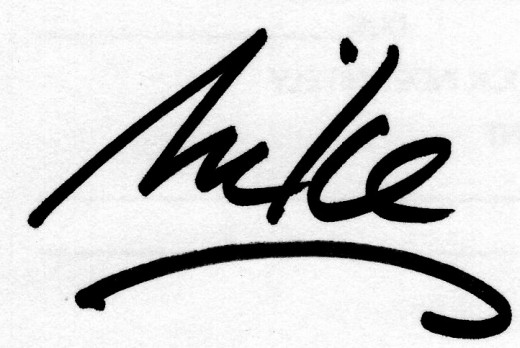
Lovely to See You
Read more articles by the author about the Moody Blues and music
- The Moody Blues' Lost Years: Their Solo Work Remembered
The Moody Blues are one of the most enduring and beloved rock bands in music history. Justin Hayward, John Lodge, Graeme Edge and Ray Thomas have been performing for over 40 years, and have written... - An Evening with the Moody Blues
Words inexplicably fail me as I attempt to describe what the Moody Blues have meant to me since I first heard On the Threshold of a Dream in 1969. This classic rock band has unknowingly provided... - The Dream is Over: A Tribute to John Lennon
On December 8,1980 Mark David Chapman gunned down John Lennon on the steps of the Dakota, the New York apartment building in which Lennon, Yoko Ono and his son Sean lived. Lennon was back in the public... - Twelve Favorite Love Songs
Im driving my car down a quiet road on a warm spring day. Trees line both sides of the road, stretching into the distance. The windows are open and the breeze hits my face and softly caresses my... - Songs for the Road
I fondly recall numerous excursions heading west on Interstate 70 toward Colorado, California, Las Vegas or anywhere but Kansas. I took many road trips, by myself or with friends. The vehicles were... - Four Country Songs That Tell a Story
A song that attracts our attention or even touches our heart typically combines a nice melody with strong lyrics. We can certainly appreciate a song that offers only powerful words or a strong tune but...


